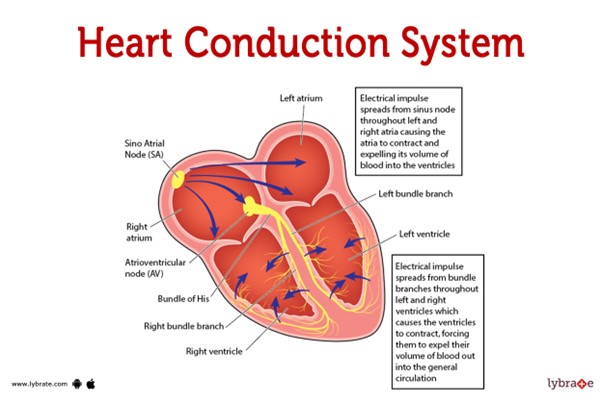Four hours after mechanical ventilation is initiated for a patient with a suspected drug overdose, the patient's arterial blood gas (ABG) results include a pH of 7.50, Pa0 2 of 80 mm Hg. PaCO2 of 29 mmHg, and HCO3 of 23 mEq/L (23 mmo/L). The nurse will anticipate the need to:
decrease the respiratory rate.
Leave the ventilator at the current settings.
increase the tidal volume (VT).
Increase the F102
The Correct Answer is A
The ABG results show a pH of 7.50, PaCO2 of 29 mmHg, and HCO3 of 23 mEq/L, indicating respiratory alkalosis. In respiratory alkalosis, there is a decrease in PaCO2 (hypocapnia), which can be caused by excessive ventilation.
To address the respiratory alkalosis, the nurse should decrease the respiratory rate. This would help reduce the amount of ventilation provided and allow the patient to retain more carbon dioxide (CO2), thereby increasing the PaCO2 levels and restoring acid-base balance.
B. Leaving the ventilator at the current settings in (option B) is incorrect because it may exacerbate respiratory alkalosis as it would maintain the same level of ventilation.
C. Increasing the tidal volume (VT) in (option C) is incorrect because it would not address the respiratory alkalosis. Tidal volume refers to the volume of air delivered with each breath, while the issue in this case is excessive ventilation leading to hypocapnia.
D. Increasing the FiO2 (fraction of inspired oxygen) in (option D) is incorrect because it is not indicated based on the given ABG results. The oxygenation (PaO2) level is within normal limits (80 mmHg), suggesting adequate oxygenation.
It is important to consult with the healthcare provider or respiratory therapist for further guidance on adjusting the ventilator settings based on the patient's condition and response to therapy.
Nursing Test Bank
Naxlex Comprehensive Predictor Exams
Related Questions
Correct Answer is A
Explanation
 This pathway represents the normal sequence of electrical impulses that coordinate the contraction and relaxation of the heart chambers.
This pathway represents the normal sequence of electrical impulses that coordinate the contraction and relaxation of the heart chambers.
The electrical signal originates from the sinoatrial (SA) node, which is often referred to as the natural pacemaker of the heart. It is located in the right atrium and generates the electrical impulses that initiate each heartbeat. From the SA node, the electrical signal travels to the atrioventricular (AV) node, which is located at the junction between the atria and ventricles.
After passing through the AV node, the electrical impulse travels through the bundle of His (also known as the atrioventricular bundle) and divides into the right and left bundle branches. These branches continue the conduction pathway and deliver the electrical signal to the Purkinje fibers.
The Purkinje fibers spread the electrical impulse rapidly throughout the ventricles, stimulating the contraction of the ventricular muscle and allowing for efficient pumping of blood out of the heart.
Therefore, the correct sequence of the normal conduction pathway in the heart is:
A. SA node - AV node - bundle of His - bundle branches - Purkinje fibers.
Correct Answer is C
Explanation
The sepsis resuscitation bundle typically includes the administration of intravenous fluids to restore adequate perfusion and address hypovolemia. The initial fluid of choice is often the crystalloid solution, such as Lactated Ringers (LR), and the recommended initial fluid bolus is 30 ml/kg. This intervention aims to optimize intravascular volume and improve tissue perfusion.
A. Cooling baths in (option A) is incorrect because they may be used in the management of hyperthermia or fever, but they are not specific interventions in the sepsis resuscitation bundle.
B. Blood transfusion in (option B) is incorrect it may be necessary in certain cases of sepsis, such as severe anemia or hypovolemia, but it is not a routine intervention in the sepsis resuscitation bundle based solely on the provided information.
D. NPO status (nothing by mouth) in (option D) is incorrect because it is not a specific intervention in the sepsis resuscitation bundle. It may be indicated in certain cases, such as when surgery is required or if there is a risk of aspiration, but it does not directly address the sepsis-related variables mentioned.
It is important to note that the specific management of sepsis may vary based on the patient's individual condition, clinical presentation, and healthcare provider's orders.
Whether you are a student looking to ace your exams or a practicing nurse seeking to enhance your expertise , our nursing education contents will empower you with the confidence and competence to make a difference in the lives of patients and become a respected leader in the healthcare field.
Visit Naxlex, invest in your future and unlock endless possibilities with our unparalleled nursing education contents today
Report Wrong Answer on the Current Question
Do you disagree with the answer? If yes, what is your expected answer? Explain.
Kindly be descriptive with the issue you are facing.
